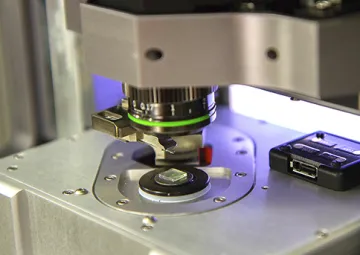
Asylum Cypher S/ES Atomic Force Microscope
The Cypher ES is designed for high resolution imaging and Fast Scanning of material surfaces. Two high resolution pieozoelectric scanners capable of measuring areas up to 30 µm x 30 µm with a vertical range of ~ 4 µm are available for imaging. The S-scanner can image samples in air and liquids. The ES scanner for imaging samples in liquids or controlled gas environments has a gas perfusion cell, liquid perfusion cell, heater sample cell (ambient up to 250 deg C), cooling and heating sample cell (0-120 deg C), and controlled environment CAFM cell. The instrument has blueDrive for photothermal excitation of the cantilever which provides a clean drive response of the cantilever for tapping mode applications in air and liquids. Sample size is limited to ~ 1 x 1 inch mounted on 15 mm magnetic steel platens. This instrument is in an acoustic and air temperature controlled housing. Quantitative probe calibration is available on this instrument.
Imaging Modes: Tapping Mode, Contact Mode, Force Spectroscopy, Fast Scanning Tapping Mode, Phase Imaging, Quantitative Nanomechanical Measurements, AMFM, Electrochemistry, Scanning Kelvin Probe, CAFM (ORCA and dual gain ORCA), Force Modulation, blueDrive photothermal cantilever excitation, and Imaging in Liquids, controlled gas environments and controlled temperature.
*AFM probes are billed separately at cost.
PUBLICATION ACKNOWLEDGEMENT: All Cypher AFM images and data were collected in the W.M. Keck Center for Nano-Scale Imaging in the Department of Chemistry and Biochemistry at the University of Arizona. This material is based upon work supported by the National Science Foundation under Grant Number 1337371.
Any opinions, findings, and conclusions or recommendations expressed in this material are those of the author(s) and do not necessarily reflect the views of the National Science Foundation.

